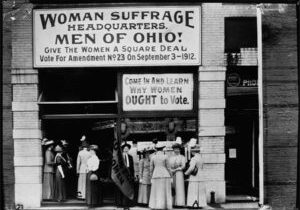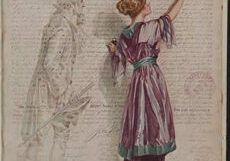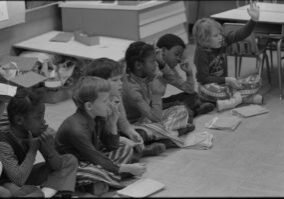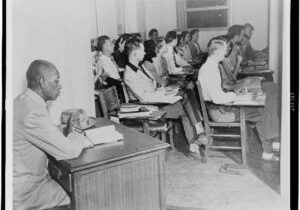Lesson Plans
Why is the Civil Rights Movement Taking So Long?
Students analyze oral histories to explore potential social, economic, and geographic barriers to achieving or promoting civil rights. After, students craft a response to the lesson's question in writing or video format.
Tactics in the March to Suffrage
Students examine the tactics supporters of the woman suffrage movement used in their long quest to gain the right to vote through primary source analysis, consider the effectiveness of various social movement strategies, and create their own tactical plan to affect change on an issue relevant to their own lives.
Perceptions & Roles of American Women
Students analyze historical primary sources and then create their own contemporary sources as they investigate and consider how perceptions of women in America and their roles in society have evolved over time. After, students brainstorm ways that citizens can work to achieve greater equality for all.
Gender Equality
Students analyze primary sources to explore news coverage of women’s rights and how people have used media to bring attention to their causes. After, students research and report on a modern-day social movement that has gained attention through citizen journalism and social media.
Women’s Rights: Seneca Falls & Beyond
Students investigate a key event in the history of women's rights and the importance of commemorating the struggle for equal rights, then consider possible contributions to help ensure a future with greater equality.
Race, the 14th Amendment, and Equal Protection
Students engages in inquiry and analysis using primary sources, role play, and discussions of racial discrimination. Students then use evidence-based claims to examine the 14th Amendment and university admissions procedures.
Education and Equality in the Courts
Students analyze primary sources related to equality in education in the United States. In Part I, students analyze two sets of primary sources that illustrate major transformations in American public education following both the Mendez v. Westminster (1947) federal case and the Brown v. Board of Education (1954) Supreme Court case. In Part II, students participate in a moot court activity about expanding equality for undocumented immigrant and legal-resident or citizen students in the historic Supreme Court case of Plyler v. Doe (1982). Students then write their answers to questions about the role of equality in public education.
Equality Under the Law: Problems and Solutions
Students examine how equality under the law has evolved in the United States. Students then use both primary and secondary sources to summarize and report on a problem of equality and its solution under the law, and reflect on how these lessons from history can help them as they consider issues of inequality in contemporary society








